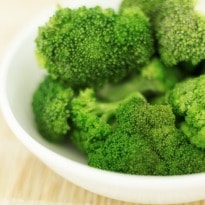Super foods may have been the mainstay of the health industry for a long time, but now researchers are questioning their much touted health promoting properties. Foods such as broccoli, blueberries and whole grains do contain polyphenols, compounds that have antioxidant and anti-inflammatory properties, but their health-giving properties seldom make it past the gut, contend experts. "Polyphenols may well work when cells are exposed to them directly, such as under laboratory conditions, but what needs to be established is how effective they are when consumed as part of a food," said Lucy Jones, Kingston University's deputy dean of the faculty of science, engineering and computing.
"If they don't actually get through the gut membrane and into the rest of the body, then they're not a super food," said Jones, who with colleague Elizabeth Opara have taken a model developed in the early 1980s by Sloane Kettering Institute in the US and adapted it to see if and how medicinal Chinese herbs, known to limit the growth of cancer cells, are absorbed in the body. Known as the Caco-2, the model mimics the action of the small intestine, the principal place where nutrients are taken up. The Kingston researchers have used it to assess what does and doesn't make it through the gut, according to a Kingston statement. "The Caco-2 is a single layer of cells grown in a laboratory environment that develops the characteristics and functions of the micro-villi, the tiny hair-like projections that aid efficient absorption found mainly in the small intestine," Opara said. "This method allows us to look at what nutrients pass through into the body and could be used to test food supplements, drugs and foodstuffs. "We found that while some compounds may have a local effect in the gut itself, in terms of the rest of the body the impact could be negligible." Products so far tested by the Kingston University research team include herbs such as parsley, rosemary, sage and thyme.
Advertisement
For the latest food news, health tips and recipes, like us on Facebook or follow us on Twitter and YouTube.
Tags:





